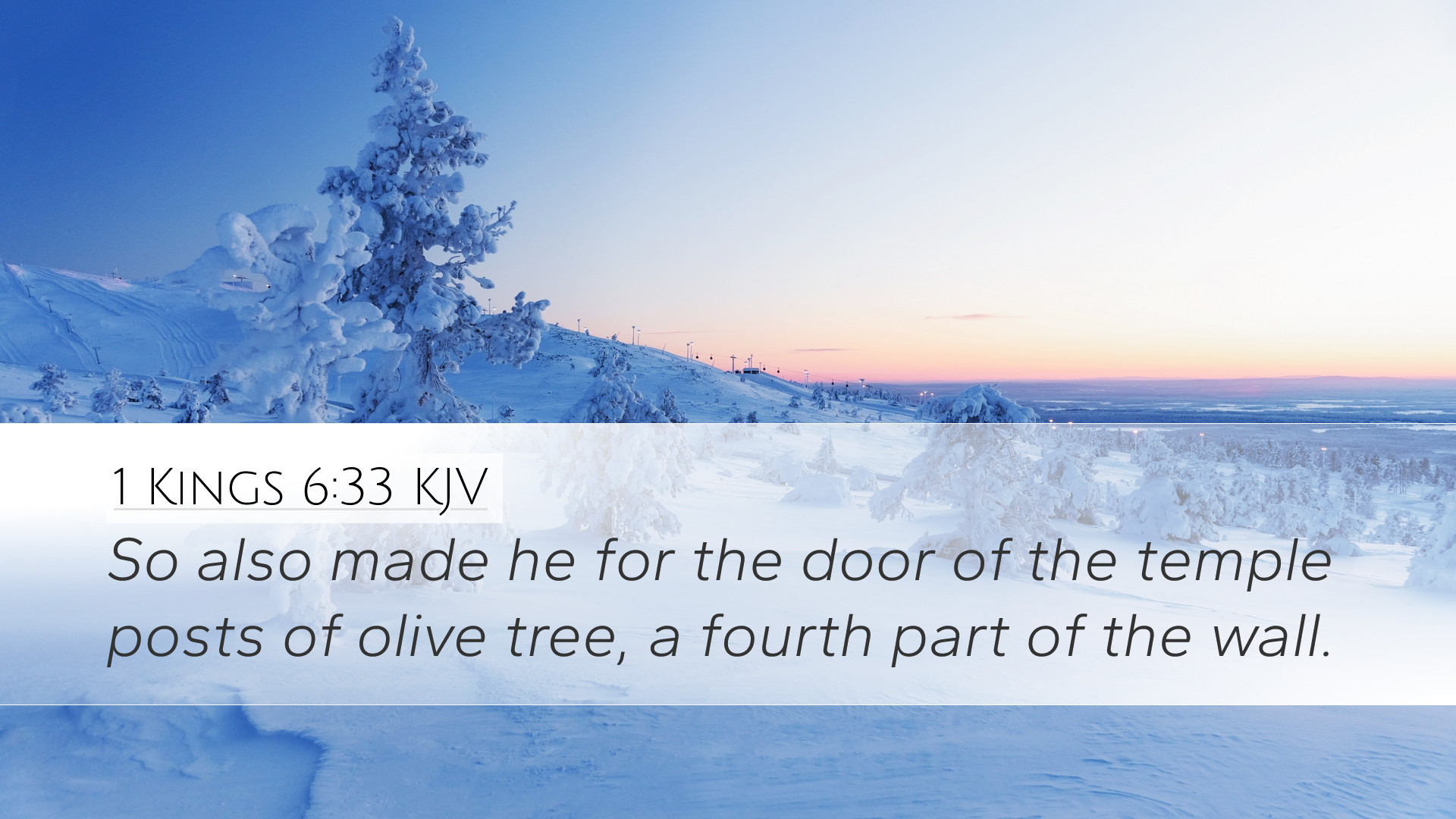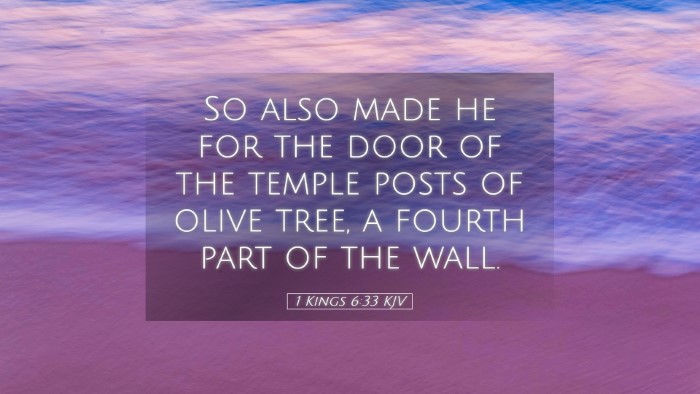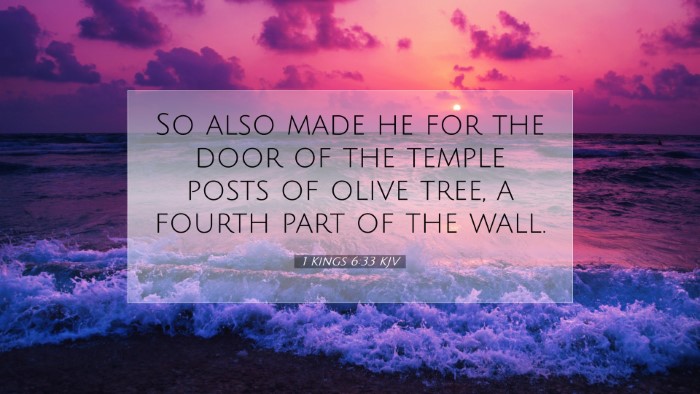Commentary on 1 Kings 6:33
Verse Context: 1 Kings 6:33 reads: "So also made he for the house of the inner court doors of olive tree; the lintel and side posts were a fifth part of the wall." This verse is situated within the broader narrative of the construction of Solomon's Temple, emphasizing the opulence and detailed craftsmanship that characterized this monumental project.
Historical and Theological Background
The construction of the Temple represents a pivotal moment in Israel's history. It symbolizes God's dwelling among His people and the establishment of a permanent place for worship. Solomon's undertaking marked a shift from the portable Tabernacle to a fixed temple, reflecting both the stability of the kingdom and the divine promise that God would dwell with Israel.
Commentary Insights
Matthew Henry's Observations
According to Matthew Henry, 1 Kings 6:33 highlights the lavishness of the Temple's inner court through the mention of olive wood—a symbol of peace and prosperity. Henry notes that olive wood was not only valuable but also incredibly durable, signifying the lasting nature of God's covenant with His people. The intricate design of the doors demonstrates the care and reverence required in approaching the divine.
Albert Barnes’ Analysis
Albert Barnes emphasizes the metaphorical significance of the doors made of olive wood. He elaborates on how the wood’s representation transcends its physical characteristics, serving as a reminder of the access God provides to His people through worship. Barnes describes the inner court as a sanctuary where the divine and human converge, and therefore, the consideration of such materials indicates the high esteem in which worship ought to be held.
Adam Clarke's Commentary
Adam Clarke remarks on the structural elements of the doors within 1 Kings 6:33. He notes that their design matches the architectural beauty of the entire Temple complex. Clarke points out that the mention of a "fifth part of the wall" indicates significant attention to proportion and aesthetics, suggesting that divine perfection is mirrored in the meticulously crafted spaces where people would seek God.
Theological Implications
This verse serves as a manifestation of God's promise to His people. The Temple was not merely a building; it was an embodiment of the relationship God desired to maintain with Israel. Each element of its construction had theological significance, calling worshippers to a deeper understanding of holiness, reverence, and the nature of God.
The Significance of Material Choice
- Olive Wood: The choice of olive wood is not incidental. It embodies richness and serenity, correlating to the peace that the presence of God offers. It reminds the faithful of the hope and abundance found in God's promise.
- Symbol of Access: The doors serve as an access point, symbolizing Christ as the ultimate door through which believers attain fellowship with God. The physical entry signifies the spiritual entrance into God’s presence.
Architectural Features Reflecting Divine Order
The architectural symmetry reflects divine order—a theme prevalent in Biblical narratives. The detailed descriptions, including the proportionality of the doors, signify a God who values beauty and precision. Such details remind believers of the Creator’s intent in their created world.
Practical Applications for Worship and Ministry
Reflecting on 1 Kings 6:33 prompts contemporary believers and church leaders to evaluate their worship environments. Just as Solomon carefully considered the materials and design for the Temple, modern-day worship spaces should inspire reverence and awe of God.
Worship Spaces: A Reflection of Character
- Intentional Design: Churches should create spaces that encourage encounters with the divine. This includes thoughtful design, aesthetic beauty, and an ambiance conducive to prayer and worship.
- Symbolism in Architecture: Like the olive wood in Solomon's Temple, elements within a church's design can carry spiritual meanings, acting as reminders of God’s presence.
The Heart of Worship
More than building aesthetics, the heart of worship must always be oriented towards God. The doors of the Temple symbolize the invitation to enter into a relationship with God, a call for all believers to step through the threshold into deeper communion with Him.
Conclusion
1 Kings 6:33, while simple in its presentation, carries deep layers of meaning that speak to the heart of worship and God's relationship with His people. Drawing on insights from Matthew Henry, Albert Barnes, and Adam Clarke, we observe the importance of detail, material choice, and the spiritual implications of the Temple's construction. Ultimately, this verse calls believers to approach worship with reverence, recognizing the profound significance of entering into the presence of our God.


